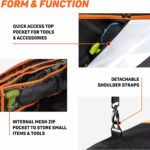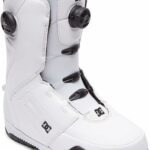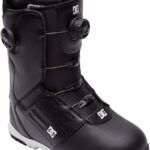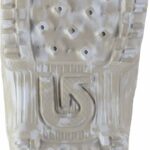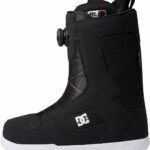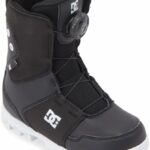So you’re setting out for a winter adventure and plan to carry along your snowshoes. Being prepared for any eventuality that might come your way in the great outdoors is smart. However, lugging your snowshoes can get cumbersome, especially when you’re not wearing them. But there’s a solution at hand. This article will talk about how you can conveniently attach your snowshoes to your backpack, making your winter exploits more manageable and less burdensome. A must-read for any winter sports enthusiast!
Understanding the Importance of Securing Snowshoes
When you are out in the wild, embracing winter’s white sheet, the last thing you want is to have issues with your gear. Part of preparation and ensuring a smooth experience includes understanding the importance of securing your snowshoes.
Why should you secure snowshoes on a backpack?
Securing your snowshoes on a backpack is essential for carrying purposes as you may encounter patches where snowshoes aren’t necessary, like ice or rocky terrain. You also don’t want to be carrying them by hand for they are bulky and may hinder your rhythm while hiking.
What could go wrong if snowshoes aren’t attached securely?
If snowshoes aren’t attached securely, they might fall off, jeopardizing not only your hike but potentially causing damage to the snowshoes or your backpack. Besides, dangling snowshoes can throw off your balance and lead to dangerous falls, particularly on challenging terrain.
Safety benefits of properly securing snowshoes
Properly securing your snowshoes will ensure not only their safety but yours as well. It reduces the risk of loss, damage and prevents disturbances like the noise of loose gear. It also ensures optimal weight distribution, improving your balance while hiking.
Different Types of Snowshoes and Their Attachment Needs
Snowshoes come in all shapes and sizes, each requiring a different method of attachment.
Understanding the different styles of snowshoes
With traditional, modern and hybrid styles, snowshoes range in complexity and functionality. Traditional ones are characterized by a wooden frame with rawhide lacing. Modern variants are designed with lightweight materials like aluminum and synthetic fabrics. Hybrid snowshoes aim to combine strengths of both.
How different snowshoe styles influence attachment
Due to differences in design, traditional snowshoes might require more delicate care when attaching to prevent damage to the rawhide. Conversely, modern and hybrid types are more resistant and offer more attachment options due to their design.
Attachment considerations for traditional vs. modern snowshoes
When attaching traditional snowshoes, care must be taken to prevent damage to laces and frames. Modern snowshoes generally come with in-built attachment systems making it simpler for the user.
Identifying Appropriate Backpack Styles
Carrying snowshoes require backpacks designed for such a task or those adaptable to it.
Features of backpacks suitable for carrying snowshoes
Backpacks that are suitable for carrying snowshoes typically have exterior attachment points, loops, or straps. They should also be resilient and large enough to bear the bulk without becoming unstable or uncomfortable.
Why the type of backpack matters for snowshoe attachment
The type of backpack matters as a small, thinly padded bag may not support or protect your snowshoes effectively. It could even lead to back discomfort if the snowshoes are pushing against you during your hike.
Providing sufficient storage space
Aside from the place to attach your snowshoes, the backpack should provide enough space for your other gear. Stuffing too much inside can hinder the secure attachment of snowshoes on the exterior.
Preparations Before Attaching Snowshoes
Like any other gear, snowshoes need preparation before assembly to ascertain the best results.
Cleaning and drying your snowshoes
Before attaching them to your backpack, ensure that your snowshoes are clean and dry to prevent carrying unnecessary weight or moisture.
Inspecting your backpack and snowshoes for wear and tear
Before setting out, inspect your gear for signs of wear and tear. Pay attention to any broken bindings or laces on your snowshoes and any weak points on your backpack, which could cause problems during your journey.
Setting up your packing system
Plan out your packing system. Keep your essential items easily accessible while ensuring that heavy items are placed towards the center of your backpack to keep your center of gravity.
Methods of Attachments Based on Backpack Styles
There are several methods to secure your snowshoes, depending on your backpack style.
Using built-in attachment points
Most modern backpacks come with dedicated attachment points or gear loops designed for attaching bulky items like snowshoes, skis, or trekking poles.
Using backpack straps or exterior loops
Backpacks with compression straps or external loops can be utilized to secure your snowshoes. Make sure however, they are tightened well and evenly on both sides to avoid imbalance or shifting.
Attaching snowshoes on backpacks without specific attachment points
In case your backpack lacks specific attachment points, do not fret. You can improvise by using gear ties, carabiners, or even sturdy fabrics like paracord looped around your backpack handle.
Step-by-Step Guide to Securely Attach Snowshoes
Securing snowshoes in a systematic way helps ensure their safety and yours as well.
Securing the first snowshoe to your backpack
Start by aligning the first snowshoe with the binding facing the backpack. Use straps or ties by threading through the snowshoe frames, then securing them to the backpack’s attachment points.
Attaching the second snowshoe
Repeat the process with the second snowshoe. Ensure both snowshoes are at the same level to avoid tilting or uncomfortable pressure against your back.
Checking for stability and security
Give your backpack a shake to check if the snowshoes are secure. If they shift or rattle, tighten the straps or re-adjust the attachment points.
Making adjustments for comfort and ease of movement
After attaching, try on your backpack and move around. You should be able to move comfortably without the snowshoes hitting your legs or swinging excessively.
Common Mistakes and Solutions While Attaching Snowshoes
Even experienced hikers can make mistakes when attaching snowshoes to a backpack.
Identifying common errors while securing snowshoes
Common errors include failing to secure the snowshoes properly leading to them falling off, or attaching them too close to the body causing discomfort during movement.
Providing solutions to common problems
If the snowshoes keep falling off, tight up the straps or try another attachment method. If they’re too close to your body, reposition them on the lower section of your backpack or horizontal if the length permits.
Preventive measures to avoid mistakes
Practice attaching the snowshoes at home before hitting the trail. Regular checks on your backpack and gear condition can also prevent unexpected problems.
Care and Maintenance Post-Attachment
Proper care means extending the life of the snowshoes and your backpack.
Cleaning snowshoes and backpack post-hike
After your hike, clean off any snow or dirt from your snowshoes and backpack to prevent degradation of the material.
Inspecting and repairing any damage
Inspecting your gear after each outing can help catch any damage early, extending their longevity and ensuring your safety on subsequent treks.
Storing snowshoes and backpack properly until next use
Store your snowshoes and backpack in a dry and cool location. Avoid piling up other items onto them to prevent warping or damage.
Personal Safety Considerations After Attachment
Once snowshoes are attached to the backpack, your next focus should be on your personal safety.
Balancing your backpack properly
A properly balanced backpack can drastically reduce the strain on your back. Aim to distribute weight evenly on both sides, and keep heavier items closer to the center of your back.
Making necessary adjustments while on the move
Walking with a backpack with attached snowshoes is different from your regular backpack. Adjust your walking style if needed, and regularly check your snowshoes and attachment system for changes on the move.
Avoiding injuries caused by improperly secured snowshoes
Loose or improperly secured snowshoes can lead to injuries. Make sure snowshoes are secure and not posing as a tripping hazard or risk hitting others.
Additional Tips and Tricks for Effective Attachment
Mastering the art of snowshoe attachment becomes easier over time. Here are some additional tips that can help along the way.
Leveraging snowshoe and backpack accessories for better attachment
Make use of accessories like additional straps, carabiners, and buckles which can offer extra security for your snowshoes.
Understanding the role of weather in snowshoe attachment
Weather conditions can affect the ease or difficulty of attaching snowshoes. Cold weather can make straps brittle, while wet weather can make it slippery. Adapting to conditions can help ensure secure attachments.
Maintaining flexibility in attachment approach to suit changing conditions
There’s no single best way to attach snowshoes on a backpack. Stay flexible and open to different methods, including improvising as per changing weather, terrain or even the condition of your snowshoes and backpack.
There you have it, a comprehensive guide to attaching snowshoes to your backpack. Be sure to practice at home before your first trek, and remember to always put safety first. Enjoy your winter hikes and the beautiful landscape that comes with it. Stay safe and happy trekking!
- What Snowboard Bindings Should I Get? - January 23, 2024
- What Size Screws For Snowboard Bindings? - January 23, 2024
- How To Snowmobile On Water? - January 23, 2024


